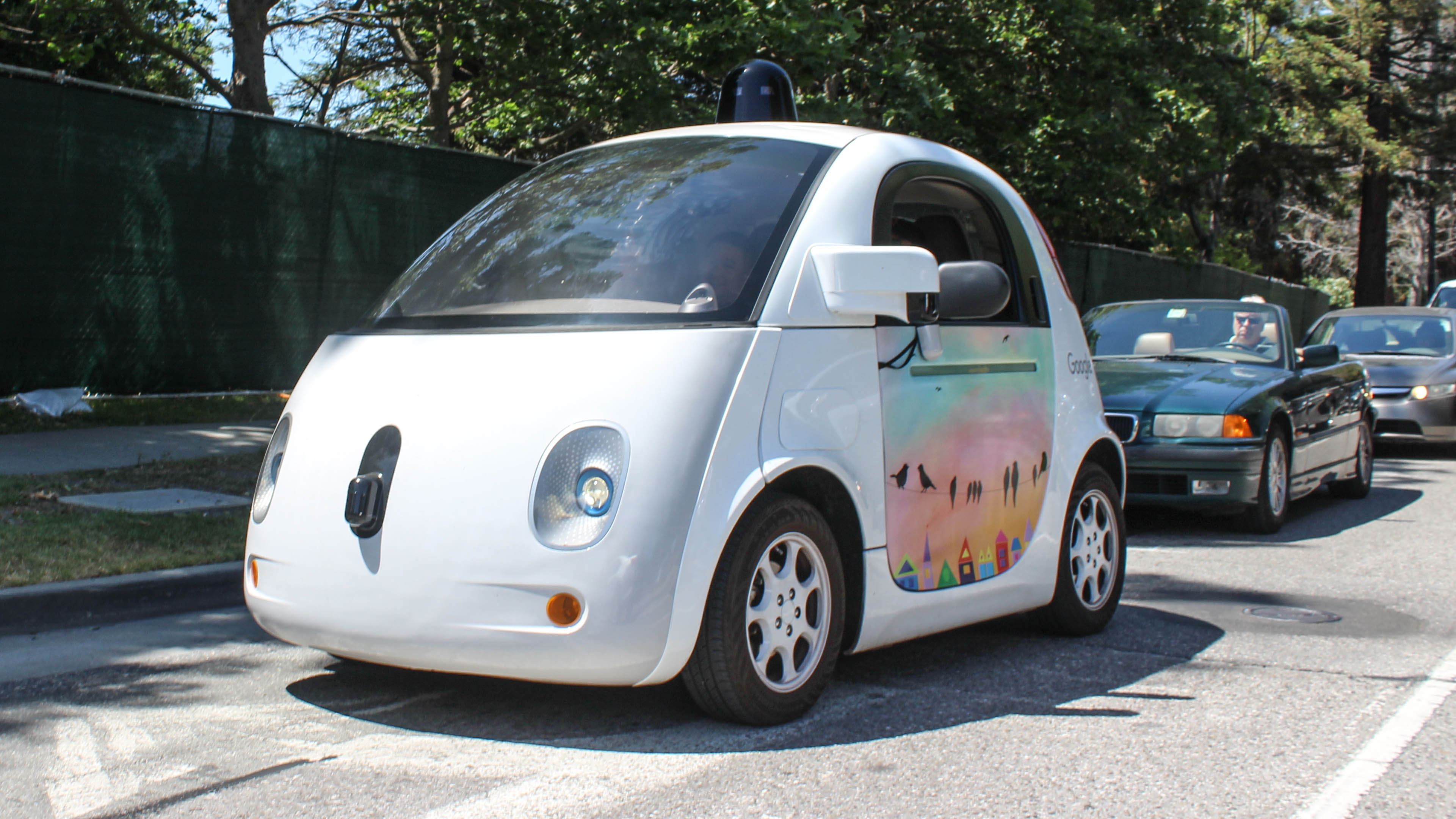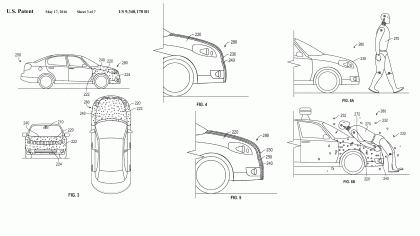Google's whacky fly trap patent aims to protect pedestrians
Google inventors create adhesive layer in front-end fascia for pedestrian safety

Google's autonomous vehicles could get into a stickier situation than ever before if covered with its recently patented technology. The Mountain View firm received a US patent for a sticky front-end for vehicles aimed at mitigating pedestrian injuries during a crash this week
According to patent documents, a thin coating will cover an adhesive layer on autonomous vehicles. When the coating layer is broken by an impact, the adhesive sticks to whatever impacted the vehicle.
In the case of pedestrians, it would prevent secondary impacts and injuries related to being thrown off the hood.
Illustrations show a car, but the term "vehicle" is broadly construed to cover any moving object, motorized or not. Adhesive layers would be on the hood, front bumper and front side panels of an autonomous or conventional vehicles, including cars, farm equipment, motorcycles, semi-trucks, golf carts, ATVs, trolleys, trams, roller coasters and more.
"The adhesive bonds the pedestrian to the vehicle so that the pedestrian remains with the vehicle until it stops," the patent states. "[Pedestrians are] not thrown from the vehicle, thereby preventing a secondary impact between the pedestrian and the road surface or other object."

This isn't the first time automotive manufacturers created devices to improve pedestrian safety during a collision. Many hoods in Europe have impact-initiated systems that will provide a more compliant hood-impact surface for pedestrians.
There's also collision avoidance technologies, but those aren't 100-percent.
Sign up for breaking news, reviews, opinion, top tech deals, and more.
"While [collision avoidance] systems are being developed, it must be acknowledged that, on occasion, collisions between a vehicle and a pedestrian still occur," the patent continues. "Therefore, it is desirable to provide safety mechanisms that reduce or prevent injury to a pedestrian when a collision between a pedestrian and vehicle does occur."
The coating Google is working on could either be an egg-shell-like protective barrier between the outside world and the adhesive or it could be a coating with the adhesive designed inside the surface, with either version of the coating breaking and adhering to the impacted surface.
An adhesive front end may sound good upon initial illustrations, however, there are some prospective incidents that drivers probably don't want to come across. An angry and alive deer stuck to the hood of an autonomous vehicle doesn't sound like very much fun.
- Here's everything you need to know about the Google self-driving car